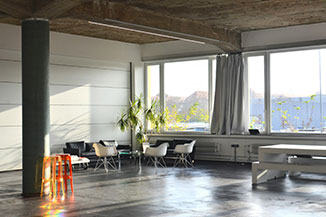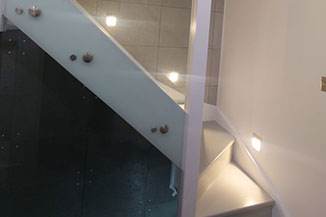London Loft Conversion Costs
The Flint costing guide to loft conversions in London
What's the Average Cost for a London Loft Conversion?
Explore the financial landscape of transforming your attic space with our comprehensive guide on the costs associated with a loft conversion in London.
Understanding Loft Conversion Costs in London
Why loft conversion costs vary so much

Navigating the financial aspects of a loft conversion in London begins with understanding the various components that contribute to the overall cost. It's essential to consider the size and scope of the project, as these will directly impact the price. The average loft conversion in London can range significantly, with basic conversions starting from around £25,000 and more extensive, bespoke projects can escalate to £60,000 or more. These figures are indicative and fluctuate based on market conditions and specific requirements.
In addition to the basic construction costs, London homeowners must also account for the expenses associated with planning permissions, architectural designs, and potentially, party wall agreements. These legal and administrative costs can add a substantial amount to the budget, so it's crucial to factor them in early on.
Key Factors Influencing the Price of Your Loft Conversion
Loft conversion pricing factors

Several key factors can significantly influence the final price tag of your loft conversion. The type of conversion—whether it's a simple roof light conversion, a dormer conversion, or a more complex mansard conversion—will largely dictate the cost. The level of structural change required, such as raising the roof or reinforcing the floor, can also be a major cost driver.
Materials and finishes play another crucial role in determining the cost. High-end materials and bespoke features will naturally increase the budget. Furthermore, the choice of contractor and their experience level can affect both the quality of the work and the price, with more reputable and experienced firms often commanding higher fees.
Comparative Cost Analysis
Types of Loft Conversions

To provide a comparative analysis, let's examine the typical costs associated with different types of loft conversions in London. A roof light conversion, which is generally the least invasive and simplest form, can range between £25,000 to £35,000. A dormer conversion, which includes an extension of the existing roof, can cost between £30,000 to £50,000, depending on complexity and finishes.
A hip-to-gable conversion, which extends the sloping 'hip' roof out to create a vertical 'gable' wall, is more complex and can cost upwards of £40,000. The most extensive, a mansard conversion, involves altering the roof structure to create a nearly vertical profile, and could set you back anywhere from £45,000 to £70,000 or more, reflecting the substantial changes and potential for high-end customization.
Budgeting for Your Loft Conversion
Hidden Costs to Consider
While the primary construction costs are often at the forefront of homeowners' minds, it's equally important to consider potential hidden costs that can arise during a loft conversion. These may include additional insulation, upgraded heating systems, or the need for complex electrical work, which can all add to the overall expense. Additionally, unforeseen structural issues, such as the need for additional support beams or foundation reinforcement, can quickly inflate the budget.
It's wise to set aside a contingency fund, typically 10-15% of the total project cost, to cover unexpected expenses. Moreover, if you plan to vacate your home during the renovation, you'll need to account for the cost of alternative accommodation.
Maximizing Your Investment
Tips for Cost-Efficient Loft Conversions
To ensure that your loft conversion is both cost-efficient and adds value to your home, careful planning and smart decision-making are essential. Consider working with an experienced architect or designer who can provide guidance on how to achieve your vision while staying within budget. Selecting the right materials and finishes that offer durability and aesthetic appeal without breaking the bank can also make a significant difference.
Moreover, it's important to choose a reputable contractor who provides transparent pricing and a detailed contract. By managing the project efficiently and avoiding last-minute changes, you can help minimize cost overruns and ensure a timely completion. Remember, investing in quality workmanship and thoughtful design will pay dividends in the long-term value of your property.